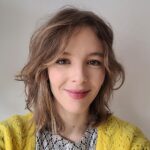Link to Pubmed [PMID] – 23237832
Nat Protoc 2013 Jan;8(1):98-110
In this protocol, we describe the use of the LastWave open-source signal-processing command language (http://perso.ens-lyon.fr/benjamin.audit/LastWave/) for analyzing cellular DNA replication timing profiles. LastWave makes use of a multiscale, wavelet-based signal-processing algorithm that is based on a rigorous theoretical analysis linking timing profiles to fundamental features of the cell’s DNA replication program, such as the average replication fork polarity and the difference between replication origin density and termination site density. We describe the flow of signal-processing operations to obtain interactive visual analyses of DNA replication timing profiles. We focus on procedures for exploring the space-scale map of apparent replication speeds to detect peaks in the replication timing profiles that represent preferential replication initiation zones, and for delimiting U-shaped domains in the replication timing profile. In comparison with the generally adopted approach that involves genome segmentation into regions of constant timing separated by timing transition regions, the present protocol enables the recognition of more complex patterns of the spatio-temporal replication program and has a broader range of applications. Completing the full procedure should not take more than 1 h, although learning the basics of the program can take a few hours and achieving full proficiency in the use of the software may take days.

